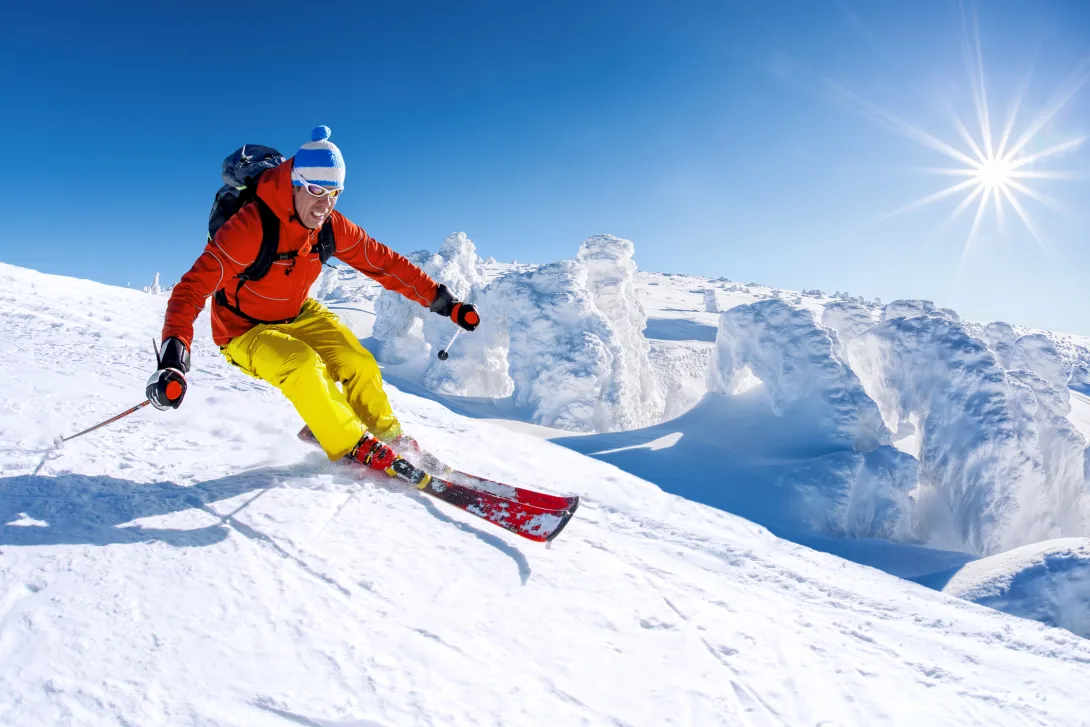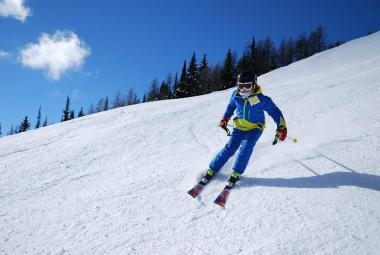Is going skiing risky?
The short answer is no; skiing is not dangerous. Like any sport, there is always the chance of injury, but unless you plan to do some intense backcountry skiing, it is not any more dangerous than your average sport.
It is normal to be apprehensive about a new experience but don't let the unknown deter you from having a great time in the mountains. Beginner skiers will enjoy groomed runs on slopes that are selected to provide a positive learning experience. Sticking to trails labeled for your ski abilities can help you stay safe. Being a beginner skier doesn't have to be dangerous.
There are several precautions you can take to ensure that you are less likely to experience injuries while skiing. Wearing a helmet, properly fitted equipment, and taking lessons can all help ensure you have a safe skiing experience.
Is Skiing Dangerous for Beginners?

Skiing is widely considered to be a relatively safe sport.
While learning anything new can present challenges, a beginner skier is not at more risk than an advanced skier. Ski lessons and following the tips below can help ensure a safer ski experience.
Each mountain has slope colors for every run to provide guidance as to how difficult or easy the course is. This really helps ensure skiers are able to handle what's ahead of them.
Skiing While Pregnant
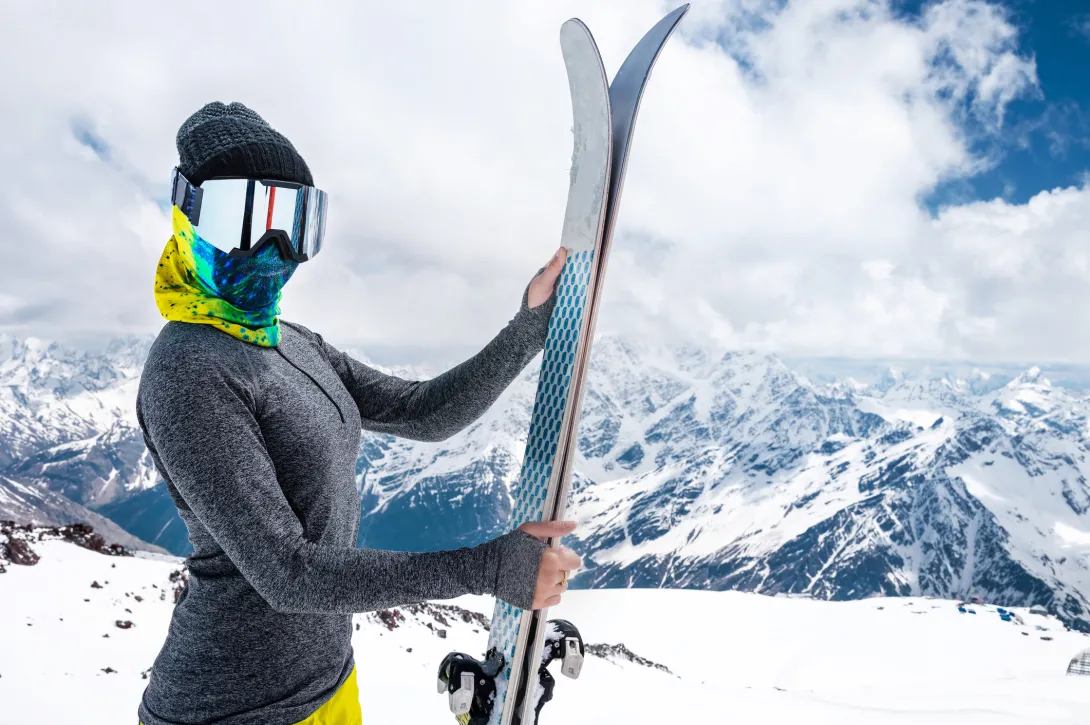
Skiing while pregnant during the first trimester or any trimester is generally not recommended. The likelihood of falls is the most significant risk when determining the safety level of skiing for pregnant women. Unfortunately, this isn't always a matter of personal choice or abilities. You will always have to share the mountain with skiers that may be less competent than yourself, and that risk may be greater than the risk you pose to yourself.
There is also the risk of dehydration, fatigue, and balance, all of which are more delicate while you are pregnant. This isn't to say that skiing while pregnant isn't for you. Have a conversation with your doctor to honestly and accurately discuss your risk level.
Skiing versus Snowboarding
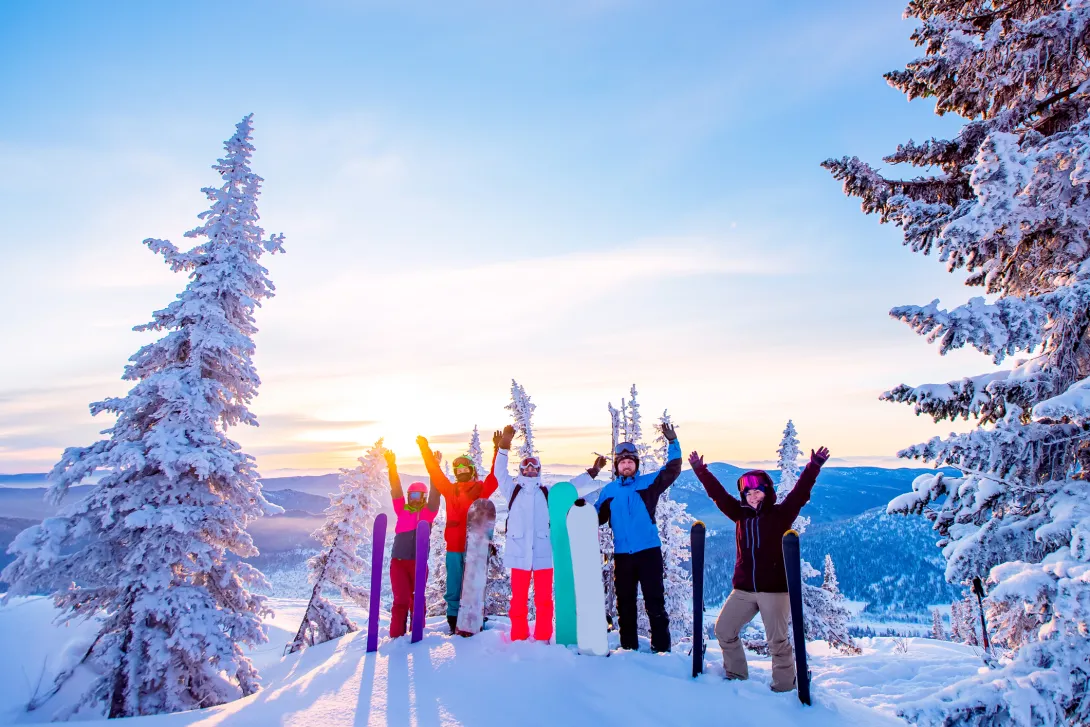
Skiing is widely considered to be safer than snowboarding. During a fall, beginner skiers are more likely to injure their knees, while beginner snowboarders are more likely to injure wrists or ankles.
Many of the accidents that happen can happen to both snowboarders and skiers. Falls, collisions with other skiers, and lift accidents can happen to anyone. Learning proper techniques and making responsible decisions can eliminate many of these risks.
Backcountry Skiing
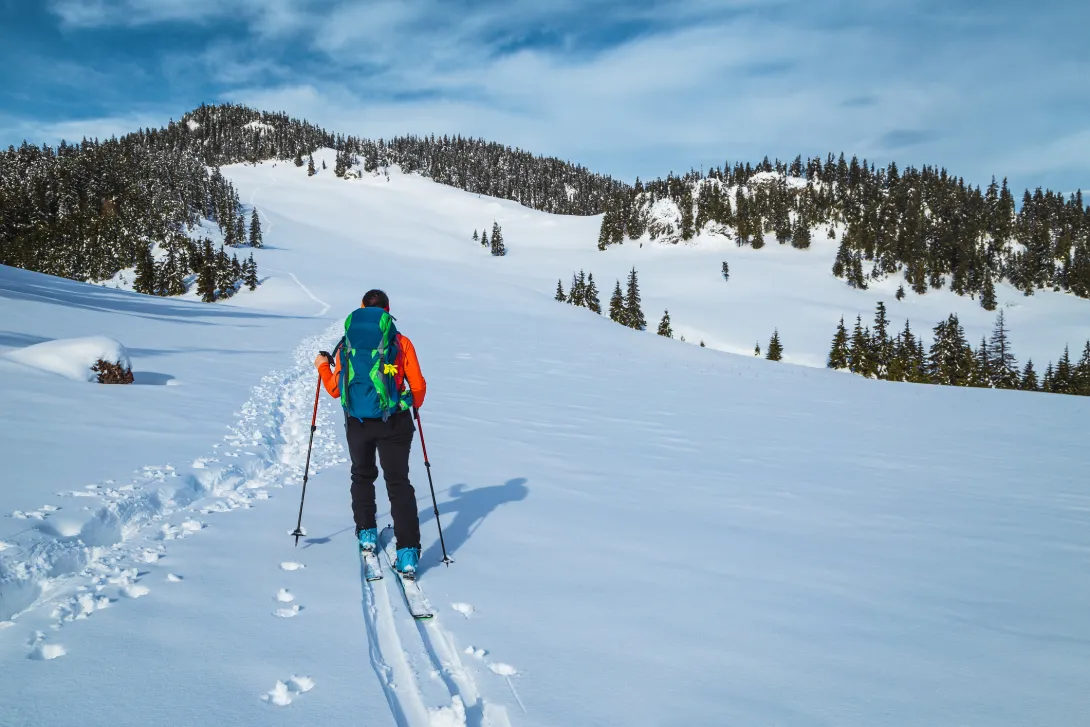
Off-Piste, in Europe or backcountry skiing in North America, is skiing outside of monitored ski boundaries. There is an inherent risk that goes along with backcountry skiing. Much maintenance goes into keeping ski trails safe during the off-season, and when skiing backcountry, you will encounter everything that Mother Nature throws your way.
When skiing backcountry, there may be an increased risk of avalanche activity. Generally speaking, most areas are maintained to reduce the chances of avalanches, but there is no guarantee with natural phenomena.
Backcountry skiing presents unique challenges in the event of an injury. There may be greater distances to travel to receive aid. Another unique challenge is the
If Backcountry skiing is calling your name, consider skiing in marked glade runs within the ski resort's boundaries. When this is a challenge you are confident in doing, find some friends with experience skiing backcountry to tag along with for the first few experiences. Be honest with yourself and your friends about your ability and comfort levels.
Freestyle Skiing
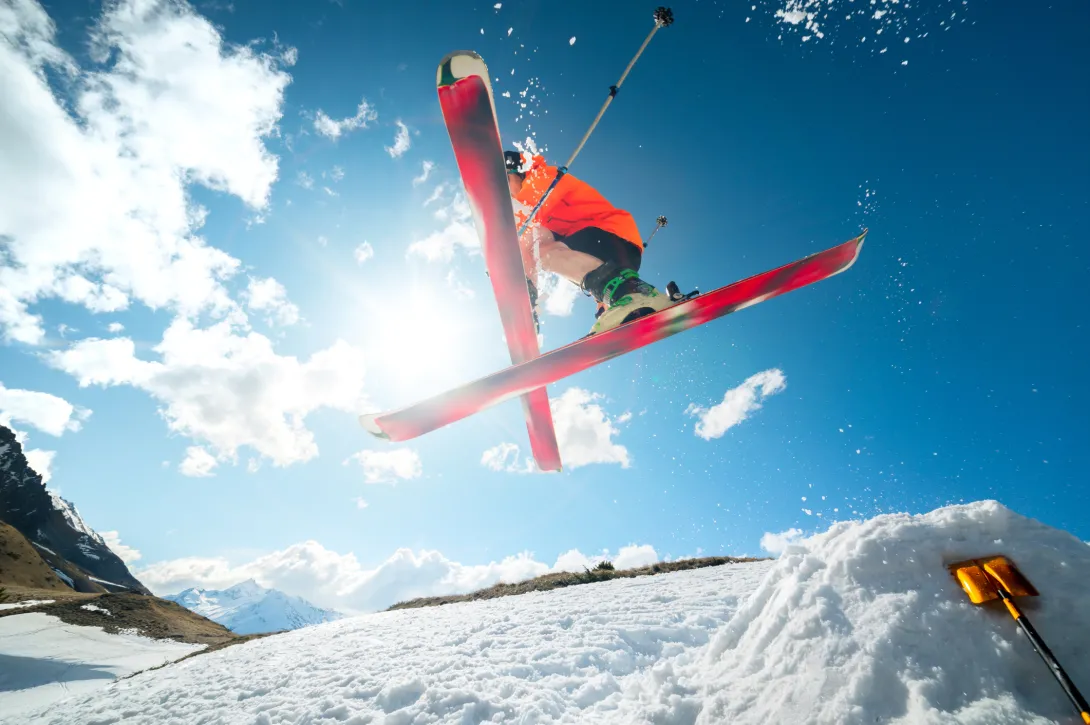
Freestyle skiing and add a fun and exciting element to your skiing. Adding the complexity of jumping, skiing backward, and aerial tricks will increase the risk of injury while skiing.
Learning tricks in a logical progression can help reduce the risk of injury, however, falls will be inevitable. Wearing appropriate equipment and a helmet is a must for freestyle skiing.
Steps To Mitigates Risks
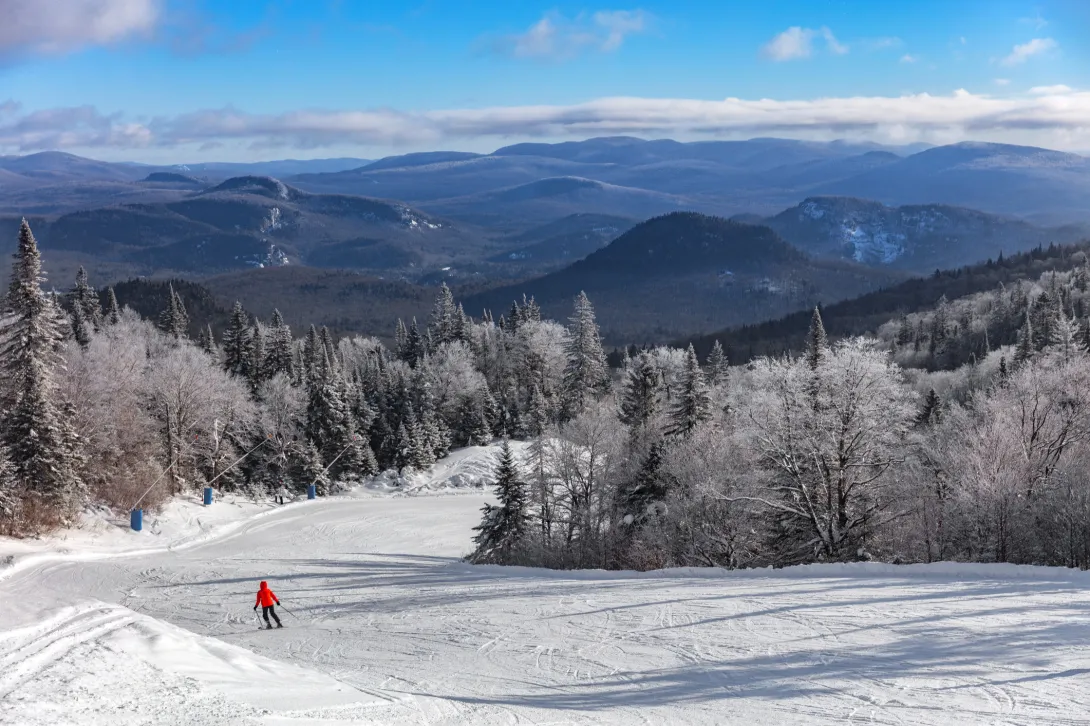
- Wear a Helmet - Wearing a well-fitted helmet will reduce your risk of concussion or severe head injuries.
- Assess your abilities - Select runs appropriate to your abilities. Green are easy runs, blue runs are generally groomed, but a little steeper, and blacks or double black diamonds are classified by how steep the run is; they are often ungroomed at mountain resorts. Ski more challenging runs earlier in the day before you are tired. If need be, take a lesson to tackle more difficult runs.
- Be aware of your surroundings - Particularly where runs merge, heading into the lift line, and when stopping to rest, knowing that other skiers are around you is crucial. Always stop at the edge of a run, on top of a pitch where other skiers will be able to see you.
- No matter your level of skiing, there is always an opportunity to take lessons and learn more. More prominent mountains have lessons teaching skiing moguls, glades, and of course, lessons for beginners. Skiing offers a lifetime of enjoyment. Growing your skillset can be a part of the journey.
Ultimately, there is an inherent risk to gliding down mountains at high speeds across varying terrain, but skiing doesn't have to be dangerous. Knowing your abilities and limits and tuning into those needs will help ensure you have a safe and fun experience for everyone on the mountain.

